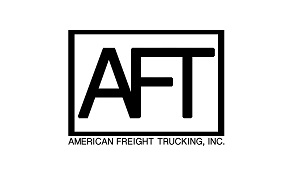Ontario finds three factors in Nipigon Bridge malfunction





U.S.-NAFTA freight value percent change from previous year over the last 24 months. Graphic: U.S. DOT
" >U.S.-NAFTA freight value percent change from previous year over the last 24 months. Graphic: U.S. DOT
" height="300">Trucking and all other transportation modes except rail carried less cross-border freight by value in July compared to a year earlier, according to new U.S. Transportation Department figures.
This resulted in a 10% decrease in the total current dollar value of freight moved. The $83.7 billion in July 2016 cross-border freight is the lowest monthly amount since February 2011, which had $76.7 billion in cross-border freight.
July also marks 19th consecutive month that the total value of U.S. freight with North American Free Trade Agreement (NAFTA) partners Canada and Mexico declined from the same month of the previous year.
The value of commodities moving by truck fell by 8.8% as rail increased 0.9%. Also falling is air freight by 6.4%, vessel by 25.1% and pipeline by 26.9%. Truck freight imports fell by 7.3% while exports declined by a larger 10.3%.
According to the department, the increase in rail is due in part to the a 14% year-over-year increase in the value of vehicles and parts traded with Mexico. A drop in the price of crude oil also played a role in the large declines in the dollar value of products shipped by vessel and pipeline. Crude oil accounts a large share of the commodities carried by these modes. Mineral fuels, a commodity category that includes crude oil and coal, accounted for 10.1% of total value of U.S.-NAFTA trade in July.
Despite the overall decline, trucks carried 64.7% of U.S.-NAFTA freight and continued to be the most heavily utilized mode for moving goods to and from both U.S.-NAFTA partners. Trucks accounted for $27.8 billion of the $44.6 billion of imports, or 62.4%, and $26.4 billion of the $39.1 billion of exports, or 67.4%%. Rail remained the second largest ...Read the rest of this story
The Fuso eCanter shown at IAA displays a little more pizazz for the show, including a redesigned interior showcasing connectivity functions. Photo: Deborah Lockridge
">The Fuso eCanter shown at IAA displays a little more pizazz for the show, including a redesigned interior showcasing connectivity functions. Photo: Deborah Lockridge
">Daimler plans to introduce two new electric commercial vehicles into the U.S. in the next few years, it announced at the IAA Commercial Vehicle Show in Hannover, Germany, while also showing off a highly connected and efficient electric concept truck.
The Mitsubishi Fuso eCanter will see a “soft launch” in the U.S. next year, most likely in areas such as southern California and New York City, where highly congested and emissions-challenged urban areas make electric delivery vehicles ideal.
In addition, Mercedes Vans says it will introduce an e-van, likely in the 2018 time frame.
In a roundtable with North American trucking reporters at the show, Wolfgang Bernhard, head of Daimler Truck & Bus, explained how rapidly evolving battery technology is making electric commercial trucks available faster than the industry would have expected just a few years ago.
In fact, at the IAA show just two years ago, he said he didn't see any applications for electric trucks.
“And you ask yourself, what made me change your mind? Honestly, what happened was battery technology changed, more drastically than we ever hoped for. And that change is driven by these guys,” he said, holding out his smartphone. “These guys are very powerful customers and are asking for more powerful batteries.”
The performance of batteries has improved by 2.5 times, he said, and the costs have come down by about the same amount. “Now we're reaching a tiring point. And that tipping point will be the end of this decade.”
Electric trucks are better than diesel for urban delivery, he said — quieter, less emissions, and they don't face the challenges that diesel engines do in stop and go traffic where they never get ...Read the rest of this story
